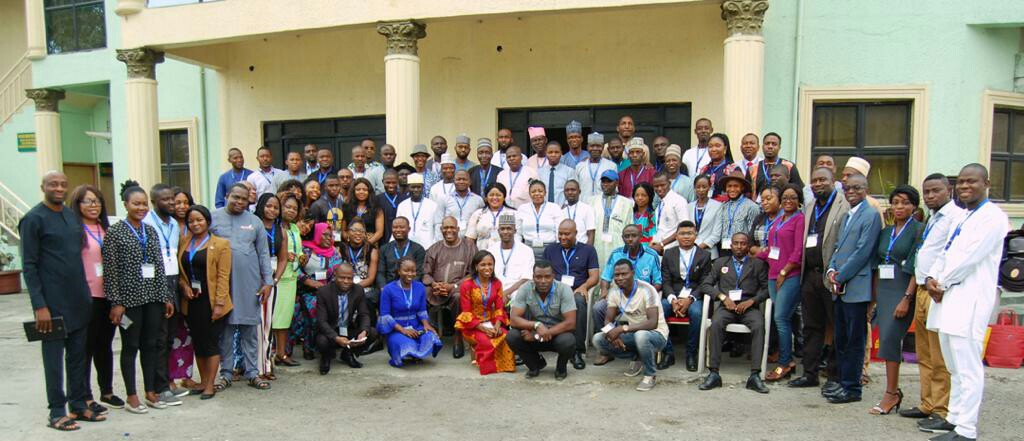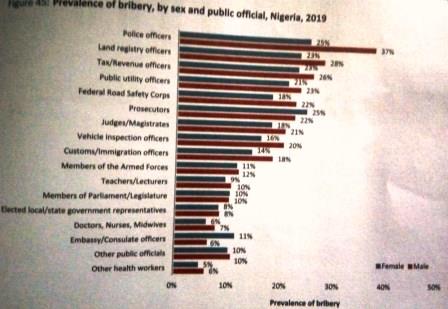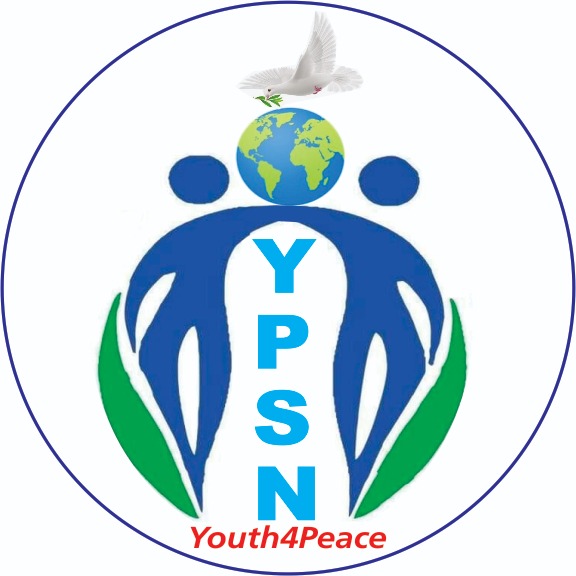
The United Nations Office on Drug and Crimes calls on the Nigerian youthful population to champion the fight against bribery and corruption in Nigeria. In an event to familiarize the youth with the second corruption Survey Report In Nigeria held in Uyo, Akwa Ibom State from the 4th -5th of March 2020, the event had over 80 youth delegates from different parts of the country.
The survey which was a collaboration between the National Bureau of Statistics and the UNODC is the only survey in Nigeria that delves into bribery practices within the public and private sectors. In the presentation of the report that investigated prevalence of bribery between 2016 and 2019 , By Dr. Isaac Adeniran , the research expert reveals that the general prevalence of bribery moved from 32.3% in 2016 to 30.2% in 2019 this is based on the interviewed population that came in contact with public officials under the time reviewed.
Regional dimension
Nigeria has 6 geo political zones and the survey looked at the regional or zonal bribery practice. While some zones witness decline, others witness a boom in bribery. For example the North Central has increased from 20.91% in 2016 to 32.6% in 2019, in the North East, there was a decrease from 35.3% to 31.9%. North West recorded a decrease form 36.2% to 25.2%, South East has a marginal increment from 24.4% to 25.9%, South –South has increase from 33.9% to 35.4% while South -West saw a decrease from 32.8% to 31.4% .This again gives a barometer to how youth population around the regions should step up their advocacy and leadership against bribery and corruption
Urban and Rural dimension
The place of residence determines how often people are expose to bribery and corruption. The survey reveals that while the prevalence rate for bribery is 34.8% in 2016 and 34.2 % in 2019 for urban areas it was 31.0% in 2016 and 28.2% in 2019. However the average number of bribes paid by bribe- payers is a little higher in rural areas than the urban areas of Nigeria
Sex dimension

While the prevalence rate of bribery among adult male was 37. 1% in 2016, it decreased to 35.2% in 2019. For adult female, it decreased from 26.6% in 2016 to 23.9% 2019. The survey further shows that rural women have a decline on corruption prevalence from 24.9% to 21.6%, urban women 29.5% to 28.4%. Rural men have the prevalence of 35.9 % in 2016 and now 33.3% in 2019. The urban men witnessed a very marginal decrease from 39.5% to 39.3%
Age Dimension
The survey established that the prevalence of bribery is high among the age brackets of 24-35 and 35-46. And of course the people in these brackets are very active persons who are desperate to take their destinies in to their own hands by any means necessary. In 2019 the prevalence of corruption within the 24-35 age brackets stood at 32% whereas it was 36% in 2016. Again in 2019, the prevalence of bribery and corruption was 32% for the age bracket of 35-49. It was 34% in 2016.
Employment status
The Survey shows that 39% of citizens in private sector were dispose to paying bribes in 2019 as against the 35% in 2016. The people in public service also increase from 30% in 2016 to 36% in 2019. Self- employed citizens has a prevalence of 31% lower than the 2016 data of 33.8%. Unemployed persons are also in the picture of offering bribes, 36.2% in 2016 and 34.5% in 20119. Students and apprentice also pay bribes at the prevalence of 32.9% in 2016 and 28.1% in 2019
Dimension by Occupation
There is a surge in prevalence among the professional, technician and managerial personnel from 32.6% in 2016 to 37.1% in 2019, clerical support service saw a spike in the prevalence from 33.8% to 38.3% and other categories of workers recorded increase from 31.7% to 36.6%
Private sector
The survey established that the prevalence of bribery in the private sector increased from 5.5 % in 2016 to 5.7% in 2019
Who Takes Bribe
The survey shows that of the public service providers studied in 2019, the Nigerian Police Force has the highest rate of 35.7%, public utility officers 19.3%, Tax/Revenue officers 5.1 %, Teachers/Lectures 6.8%, Doctors, Nurses, Midwives, 4.2% Federal Road Safety 5.6% Vehicle inspection officers 5.4% and other types of official account for 18.0%
Vote Buying
The survey looks into voter inducement through vote -buying , it was found that 17% of the respondents where personally offered money, 4% were personally offered other kinds of favour, 5% respondents were not personally offered but other members of the their households. 73% were not induced with vote- buying
Reporting Bribery
In the 2016 survey, 3.7% reported cases of bribery to the relevant authorities. In 2019, only 3.6% reported to the authority. Therefore the reporting is terribly low and citizens are highly encouraged to report bribery
In his opening remark the Country Representative, UNODC Dr. Oliver Stolpe represented by Prof . Shehu Abdullahi charges the participants to go out there and propagate the findings of the survey and become agents of change by staying -off any kind of corrupt practice in any place they may find themselves. He further observed that youth forms more than half of the Nigerian population and thus very necessary to involve youth in all activities including policy formulation and implementation hence the reason for the anti- corruption youth forum where the findings about corrupt practices in Nigerian was discussed.
Participants were grouped and thematic areas were discussed and recommendations made. The outcome of which was summited to UNODC for further action.
Trending policies
Policies supporting the fight against corruption and youth wellbeing were mentioned as references for the participants to study and understand how to apply them. These policies include:
- National Anti-Corruption Strategy
- United Nation Security Council Resolution 2250
- Secretary General’s Youth Agenda 2030
In the end, it was a majority opinion that the prevalence of administrative, mainly low value bribery has decreased under the period in review, the survey results suggest that the government’s anti-corruption agenda which tends to be focused on large scale corruption has so far only marginally affected this type of bribe seeking behavior . Consequently, a greater effort should be made and more attention paid to the eradication of bribe- seeking of this nature.
AI
